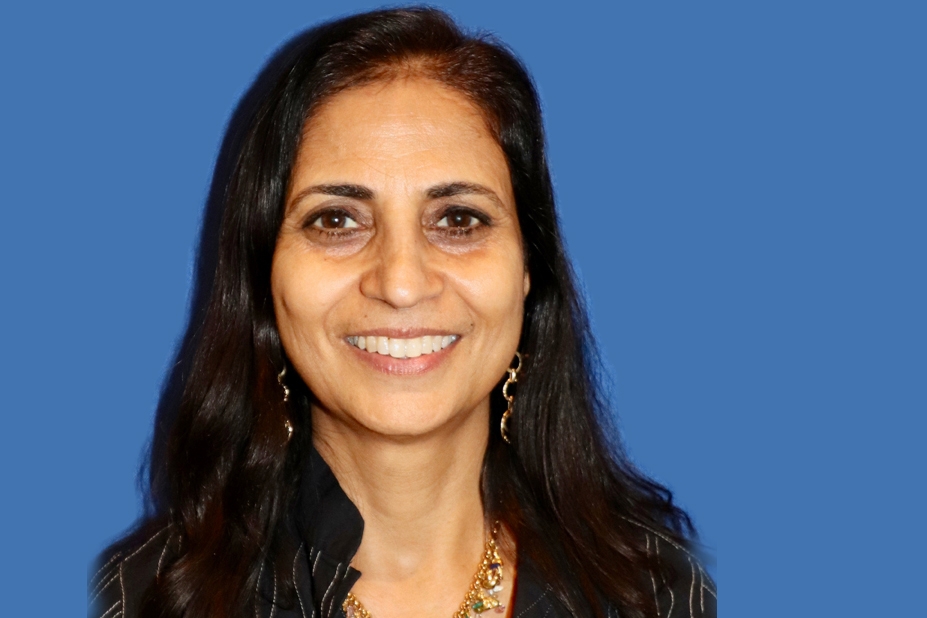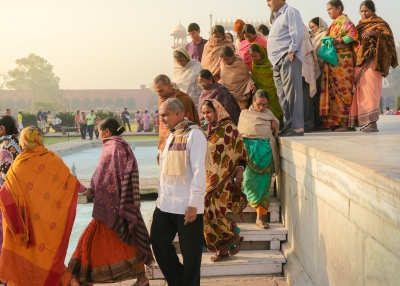'I Had a Hard Time Getting My Stories into the Newspaper'
Seema Paul on environmental journalism, the power of headlines, and the complexity that climate change adds to existing challenges

Beginning of June 2019 Asia Society hosted Seema Paul, Managing Director of The Nature Conservancy India, to talk about the pressing issue of climate change and its effects on farmers in India. Behind the scenes we had the chance to talk to her about her path to the environment and her transition from raising awareness through journalism to hands-on work in the field.
Serena Jung: You have been working in the environment protection field for decades. With the school strike for climate running for over half a year now, do you feel the times have truly changed recently?
Seema Paul: It is certainly a good sign that the next generation are taking up this issue and are beginning to understand, relate and take action. I still feel though that the issue of climate change and its public awareness have only been increasing incrementally. That is not totally surprising given that it is an abstract concept for most people – you don’t see it in clear evidence in any aspect of life unless you live right before the glaciers. But it is happening, it is a fact of life and not my generation but definitely the next – my children and my grandchildren – will be very much impacted. So, I am deeply moved by the school strikes but much more needs to be done to raise awareness around this issue around the world.
What is the situation in India around awareness of environmental protection now?
In India poor farming communities are beginning to understand that there is an issue with climate change. They too are seeing it every day in the field: parts of Maharashtra for instance were facing drought and within a month once the monsoon hit, there has been rampant flooding. But does that translate into elections? Does it translate into the way people vote? No, that is not yet happening. There is a challenge in terms of the need to communicate about this issue more effectively. There is positive movement, but it is difficult and certainly not enough.
Practical change is slow, also because oftentimes there is no simple solution. Environmental concerns compete with economic or developmental interests. How does TNC work with these parameters?
You are right. Take the issue of fresh water and take the case of India for example: India has about 16% of the world population and about 4% of the global fresh water. So, there is a big gap right there. On top of it there has been very poor governance around water which has complicated the issue: We have used a lot of ground water to sustain our agriculture to the point that there are parts of the country where there will not be any ground water left in ten years. That is pretty stark, right? That did not occur because of climate change but because of poor management of water resources, poor practices around agriculture, taking a short-term way and growing certain crops we should not have grown in the first place. Overlay on that the fact that there is no predictability around when the rain will fall or what the temperatures will be – this is what climate change does: it makes a challenging situation even more complex. How we try to tackle this challenge is by looking at the problem in its entirety.
How does that look in practice?
We undertake pilots on the ground and demonstrate how things can actually be done. Then we engage with the government so that it uses its powerful levers to initiate large scale change. And we also engage with businesses because they are extremely important for sustainability and can have large scale impact too. To take an example: We are working in Punjab and Haryana. What needs to happen in these places from a climate perspective – or just from a survival perspective – is the farming communities need to change the wheat and rice pattern as their crops. It requires a lot more rain and water than is available in these regions. We should be growing legumes or millets there. But the government is giving the farmers a perverse incentive called the «minimum support price» and procures all the wheat and rice they produce at a fixed cost. So, the farmers are assured that their produce will be picked up and the government doesn’t want to change this incentive structure right now.
But what happened recently is that air pollution became a major issue in Delhi and it made headlines in the New York Times and other big newspapers. This kind of international attention really brought home to the government that air pollution is having a lot of severe reputational impact for India and they started also understanding that this again has an economic effect. These headlines provided us with a very important entry point to make our case: In order to tackle air pollution you have to deal with crop residue burning and move the farming communities to start using the crop residue as mulch instead – it is the start of a journey into better agricultural practices.
You started out your career as an environmental journalist yourself. What made you move from creating awareness towards taking action yourself?
When I started in journalism I had an interest in environment but it was not such a big field yet and if you were an environmental journalist you were considered quite marginal in India. But I realized very early that this is becoming a big global issue – and needed global action to be successful. My interest kept growing and I also kept getting encouragement from different sides, not from the newspaper media management company but rather from the global environmental community. I got picked by the Rockefeller Foundation’s Leadership for Environment and Development program to be a fellow. Later I got the opportunity to attend the 1992 Earth Summit in Rio de Janeiro. But journalism in India at that time did not treat environment seriously. I had a hard time getting my stories into the newspaper, there were periods when for two months at a stretch an environmental story that I wrote would not appear. And I also had a deep desire to make an impact on the ground. So, I made a career transition, went to the U.S. for further education, studied environmental policy, and joined the non-for-profit world. At the back of my mind was a desire to do some hands-on work in the field of environment and see how satisfying and impactful that might be – and I actually found that it was!
Seema Paul is Managing Director of The Nature Conservancy India, an international environmental NGO. Before joining The Nature Conservancy, Seema was the Vice President at Climate Works Foundation and Founder CEO of Shakti Sustainable Energy Foundation, a non-profit dedicated to advancing climate mitigation in India. She has also served as Program Director for Biodiversity at Ted Turner’s United Nations Foundation and is an alumna of St. Stephen’s College, New Delhi, University of Maryland, U.S., and INSEAD, France.
Serena Jung is Program Manager at Asia Society Switzerland.
For all of our events we have the honor to welcome interesting and fascinating speakers. They are not just experts of a particular field, but often have access to corners of the world most of us don't. As part of our Behind the Scenes series we let them speak about their life stories and experiences.
